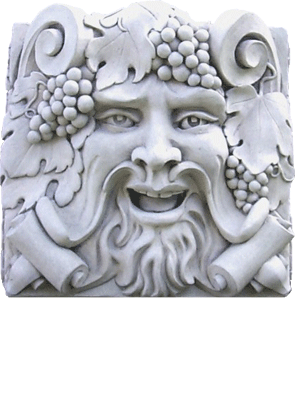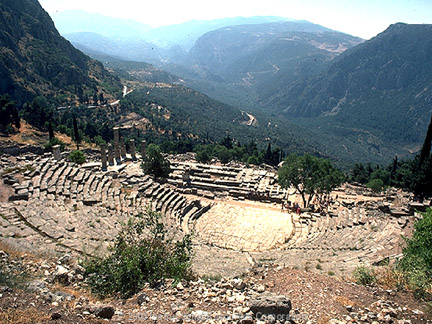Background Information (page 2)
Greek Drama--Introduction--The Theater
The Theater of Dionysos: Like a Football Stadium
NEXT: Greek Drama Introduction Continued--The Myth
Greek Drama--Introduction--The Theater
The Theater of Delphi, 4th century B.C. |
The Theater of Dionysos looked like a semicircular football stadium. The seats were carved out of stone on a hillside; at the bottom was a performance area divided into two parts. In the front was a rounded place called the orchestra, a fairly large space where the chorus sang and danced around the remnant of an altar. Behind the orchestra was a platform where the actors spoke their lines from behind huge masks. These masks had exaggerated mouthpieces that amplified the actors’ voices—an ancient solution to the problem resolved today by microphones. Many masks were stylized into familiar character types that were easily recognized by the audience. All the actors were men, and the choruses were well-trained boys. By switching masks, each actor could play several roles. |
   |
| A few days before the festival of Dionysos began, that year’s competing playwrights, choruses, and actors would march in a procession through the city of Athens. A herald would announce the titles of the competing plays, and masked dancers would parade through the streets, carrying a statue of Dionysos. |
 |
| In ancient Greece, religion and dramatic “entertainment” were closely related. To visualize a modern equivalent, imagine New York City’s Broadway theaters as the center of a four-day religious festival in which everyone in the city took part. |
| http://www.nexuslearning.net/books/Elements_of_Lit_Course4/Collection%2011/Greek%20Drama,%20Out%20of%20Ritual.htm |
NEXT: Greek Drama Introduction Continued--The Myth

